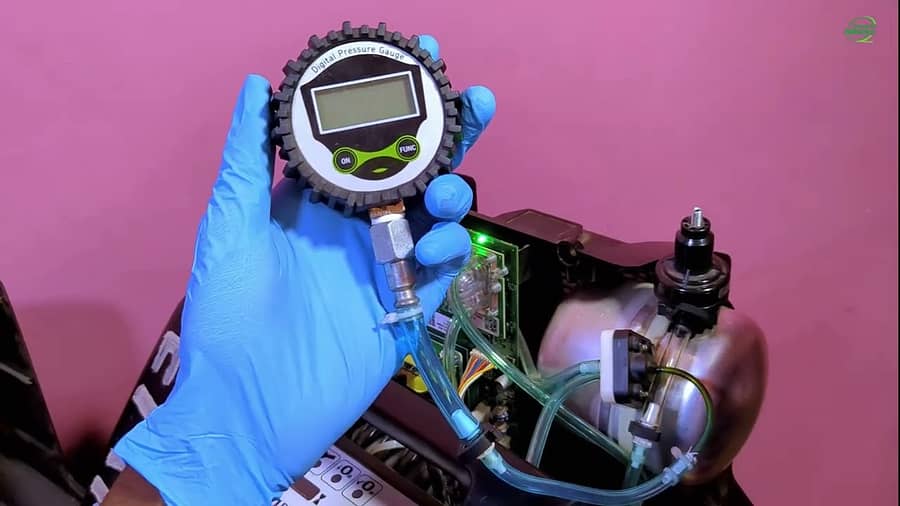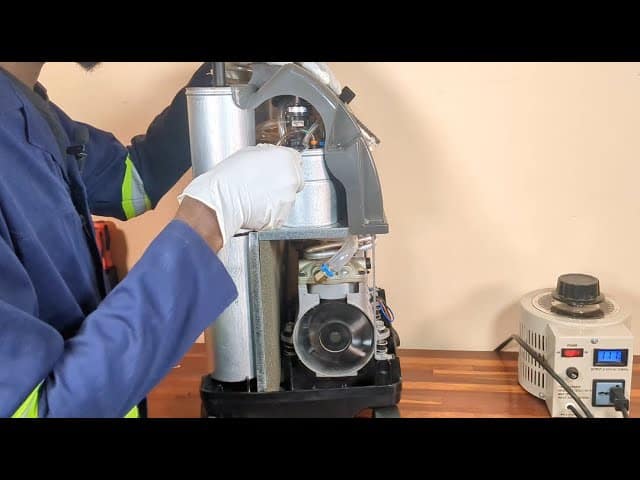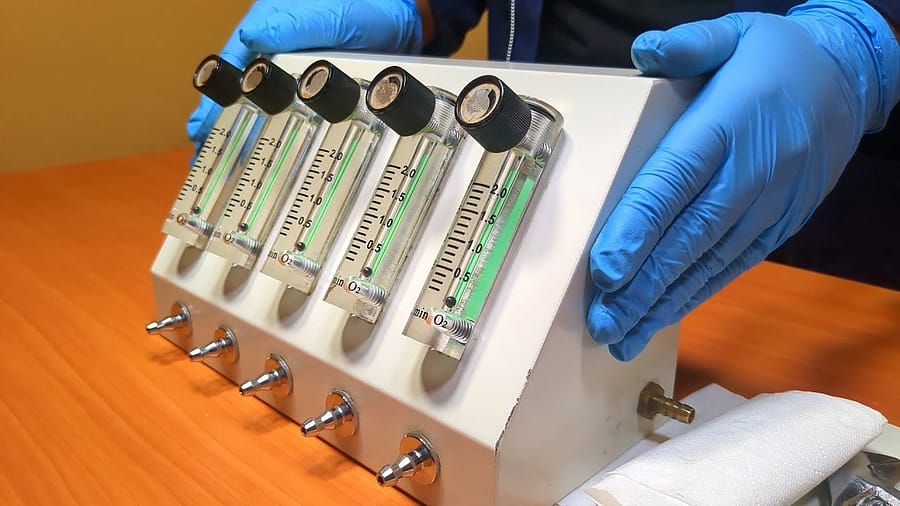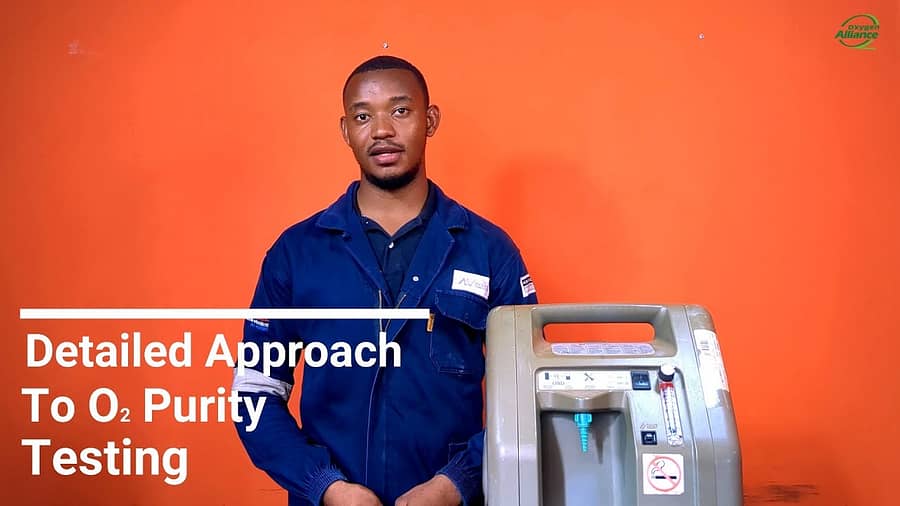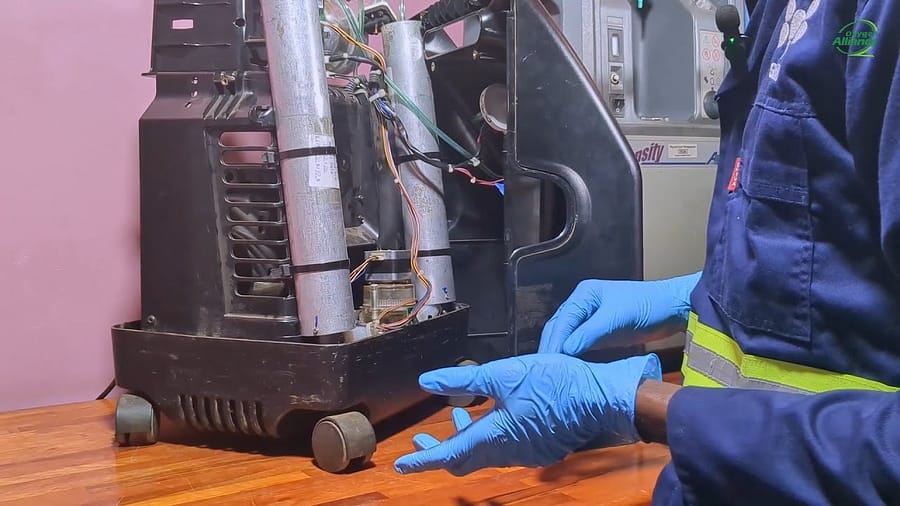Objective and Standard
The primary function of a medical oxygen concentrator is to deliver a high concentration of purified oxygen for therapeutic use. The World Health Organization (WHO) specifies a purity level of above 82% for this purpose. Therefore, oxygen purity testing is a fundamental validation of a device’s clinical efficacy. Performing this test correctly with a calibrated analyzer is a core competency that directly supports patient safety.
Analysis Equipment
The primary tools for this task fall into two main categories: ultrasonic and electrochemical analyzers.
Ultrasonic Analyzers
- Principle: This type of analyzer, such as the Oxy 1000, determines oxygen purity by measuring the speed of sound as it passes through the gas.
- Features: These are often multifunction devices capable of also measuring gas flow and pressure.
Electrochemical Analyzers
- Principle: This type of analyzer, such as the Maxtec handy plus, uses a consumable sensor that generates a signal through a chemical reaction with oxygen.
- Critical Requirement: To maintain accuracy, electrochemical analyzers require periodic calibration against a known gas source, which can be either 100% oxygen or 20.9% ambient air.
Standard Operating Procedure for Purity Testing
A methodical approach is required to ensure accurate and repeatable results.
Pre-Test Checklist
Before connecting the analyzer, verify the following to avoid common pitfalls:
- Check the analyzer’s battery level.
- For electrochemical units, confirm the device is within its calibration period.
- Ensure the sample tubing is clear and free of kinks or obstructions that could restrict airflow.
Test Execution
- Set the oxygen concentrator to its maximum rated flow rate.
- Allow the concentrator to operate for a minimum of five minutes, and preferably up to twenty minutes, before taking a measurement. This warm-up period is necessary for the machine’s sieve beds to become fully saturated and for the device to reach its peak, stable oxygen production.
- Securely connect the analyzer to the oxygen outlet of the concentrator.
- Record the stabilized oxygen purity reading from the analyzer.
- Compare the final reading against the >82% WHO medical standard and document the result in the equipment service record.
Conclusion: The Role of Analysis in Patient Safety
Disciplined adherence to this testing procedure eliminates guesswork and builds a foundation of trust in service outcomes. It allows a technician to confidently certify a machine that is performing correctly or identify a unit that requires service. This comprehensive knowledge elevates the task from simple measurement to true technical analysis, reinforcing the biomedical professional’s role as a guardian of equipment performance and patient safety.
Video Reference
A detailed video guide is available to demonstrate the proper use of both ultrasonic and electrochemical oxygen analyzers and to highlight common mistakes that must be avoided.
Watch the full testing procedure video here:



